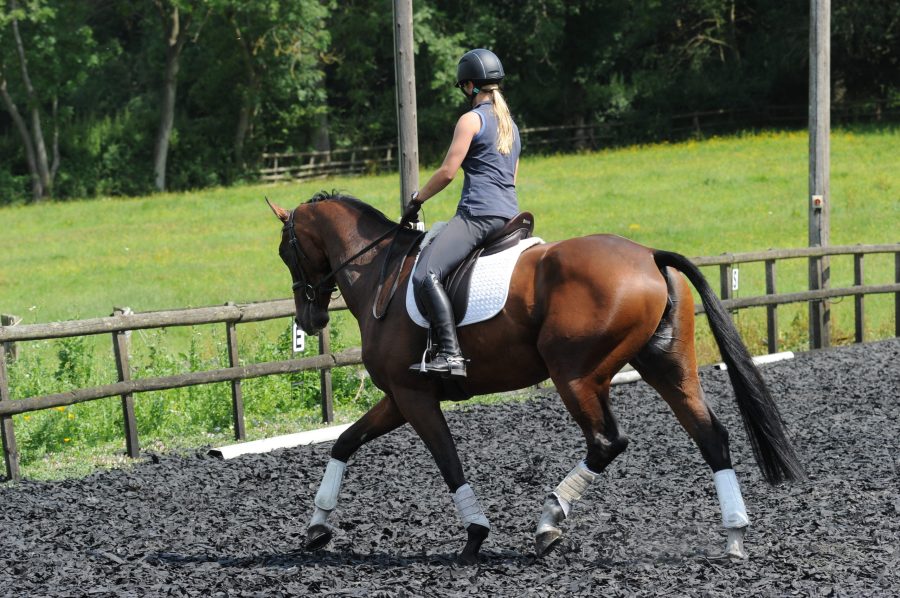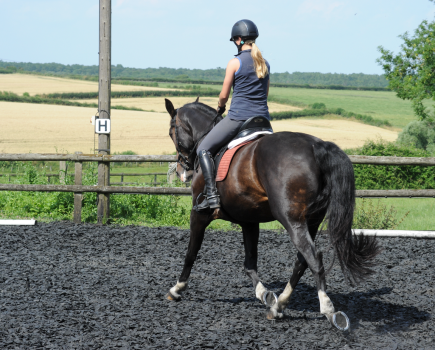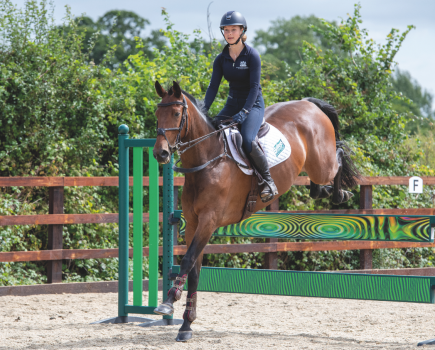Ever been told that you need to ride better corners? Perhaps your coach or a dressage judge has remarked that you and your horse could go deeper into a corner to give yourself more space; maybe you need to maintain balance the whole way through, or you need to ride a clearer turn — rather than a curve.
When you train corners correctly, the payoff is great, but it takes practise and the importance of riding good corners is often underestimated by riders, even forgotten. Whether you struggle with bend, drifting or anything in between, the following exercises from grand prix dressage rider and trainer Tania Grantham, from Inspire Dressage, will help you banish corner conundrums once and for all.
Why good corners are important
In a dressage test, corners are free spaces that allow you to rebalance and reorganise. When a corner is ridden well, your horse should take his weight behind and show forward, balanced steps. He’ll maintain inside bend and an upright frame, and won’t display that motorbike action in which horses drift around a turn.
Exercise 1: Better bend
People often mistake neck bend for true bend, but I ask riders to focus on how their whole horse would look from above — would his body conform to the line you intend to ride? This is pertinent with leg-yield, for which you want your horse’s whole body to step across and not just his shoulders. This leg-yield spiral exercise taps into this while helping you establish and maintain correct bend:
- Begin on a 10m circle.
- Use your inside leg to ask your horse to step across, your rein aids to control bend and speed, and your outside leg to regulate drifting.
- Aim for a 12-15m circle after one circle, then a 15-18m after a second and 20m after a third.
- Your horse should press into your outside rein and feel soft through his ribcage when you apply inside leg.
Exercise 2: Stop falling out
You need to feel your horse pushing into the outside rein: this is what’s known as connection. Turn-on-the-forehand is the ultimate test, as without outside rein connection he’ll go forwards, rather than move his hindquarters around his forehand.
- Begin with a square halt.
- Turn your hips and shoulders to the inside and use your inside leg behind the girth.
- A split second later, squeeze and release the outside rein to indicate that you want to him to move sideways, not forwards.
- Repeat these aids to guide him gradually around a quarter-turn initially, building up to more as he progresses. You know you’re doing it right if you can give with the inside rein.
- Progress to a turn-about-the-forehand — half-halt to the point of stopping and then apply turn-on-the-forehand aids before he halts.
- Once he’s crossed under and completed a quarter-turn, ride straight to complete a deep and exaggerated corner.
Exercise 3: Stop falling in
Placing a block just inside a corner is an effective visual reminder and helps many riders correct falling in with use of their inside leg. Similarly, riding a 10m circle at a corner letter helps set up the bend you’ll need to push your horse deeper into the corner itself, and prevents drifting through his inside shoulder.
This will also reinforce that performing a 10m circle at a corner letter and then riding an actual corner means taking two different lines. A 10m circle takes you 5m either side of the corner letter, but not properly into the corner, which is 6m away.
If riding the 10m circle takes you no further into the corner than you’d normally aim for, you’ve actually been cutting them — the lesson here is that you can always ride deeper into a corner than you think.
Exercise 4: Collect in your corners
I do this adaptable corner exercise with inexperienced/young horses all the way up to seasoned grand prix horses.
- Beginning in trot, make a walk transition on the last possible straight step before the corner — this could be just after the corner letter on an unexperienced horse.
- Walk slowly, pushing your horse deep into the corner with your inside leg before returning to trot on the first straight step out. This teaches your horse to collect going into a corner and to move forwards on exit.
Make this exercise your own and vary where you make your transition to throw off a horse who anticipates. You can also step up to canter-trot, canter-walk or perform a very collected trot through the turn. Tailor what you do to your horse’s ability and feel him progress.
What’s the rider’s job?
All of these exercises tap into one very important skill — riding from the inside leg to the outside rein. This is vital for connection, balance and control, and implementing it into your everyday schooling sessions will ramp up your horse’s rideability and boost your dressage marks. You can get started with any of these exercises and enjoy the benefits today.









